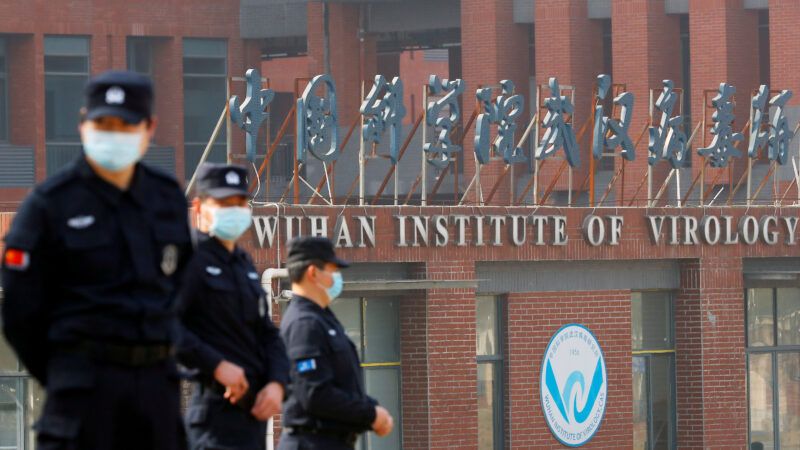Researchers Call for 'Full and Unrestricted' Investigation Into COVID-19 Origins
A recent WHO investigation has left many questions unanswered.

The Chinese government has not been forthright about the origins of the novel coronavirus that sparked the ongoing global COVID-19 pandemic. On January 5, 2020, the World Health Organization (WHO) issued an emergency preparedness notification reporting that Chinese officials had alerted the agency to an outbreak of pneumonia of unknown cause in the city of Wuhan. The alert noted that "some patients were operating dealers or vendors in the Huanan Seafood market." The dominant narrative was that the virus most likely jumped from bats to humans (possibly via an intermediary species) at a wet market in Wuhan.
Doubts about the market being the initial source of the outbreak soon surfaced. Some articles in late January 2020 cited the possibility that the virus might have escaped by infecting a worker associated with the Wuhan Institute of Virology (WIV), a laboratory known to conduct research on coronaviruses. In April, the U.S. Office of the Director of National Intelligence issued a statement declaring that "the Intelligence Community (IC) also concurs with the wide scientific consensus that the COVID-19 virus was not manmade or genetically modified." However, in January 2021, the U.S. Department of State released a fact sheet that suggested, among other things, that the outbreak could have been "the result of an accident at a laboratory in Wuhan, China."
The fact sheet specifically noted that beginning in 2016, "WIV researchers conducted experiments involving RaTG13, the bat coronavirus identified by the WIV in January 2020 as its closest sample to SARS-CoV-2 (96.2% similar)." The fact sheet added that "the U.S. government has reason to believe that several researchers inside the WIV became sick in autumn 2019, before the first identified case of the outbreak, with symptoms consistent with both COVID-19 and common seasonal illnesses."
It is notable that on September 12, 2019, the main database of samples and viral sequences of the WIV was taken offline. In the meantime, Chinese officials were spreading the rumor that the virus may have actually been introduced into their country by the United States Army.
It isn't uncommon for pathogens to jump from animals to humans. For example, flu viruses have frequently crossed over from pigs and birds into humans. The Ebola virus leaped from bats into people. And earlier in this century, SARS and MERS—both caused by coronaviruses—were passed on to people by bats and camels. Nevertheless, the Chinese government's resistance to investigating the origins of the COVID-19 virus raised eyebrows.
As the pandemic spread across the globe, the Chinese government stymied the attempts of outside investigators to come to Wuhan to sift through relevant data. Finally, a team of WHO investigators was allowed to go to Wuhan in January and February, but their activities and access to data were considerably constrained. Nevertheless, at a February 9 press conference in Wuhan, the WHO team called the lab leak hypothesis "unlikely."
Unsatisfied with the WHO investigation, a group of researchers issued an open letter on March 4 calling for a full and unrestricted international forensic investigation into the origins of COVID-19. The WHO team, in their view, simply did not have adequate access to information to determine whether the outbreak was due to a natural spillover from an animal species or a laboratory/research-related incident.
Among the defects in the WHO investigation is that most of the fieldwork had to be conducted by the Chinese members of the team, with the results simply being communicated to the international members for review and discussion. Another is that reports had to be approved by consensus, meaning that the 17 members appointed by the Chinese government who comprised half of the WHO team have effective veto power over what will be ultimately reported. Further, the WHO investigators did not have access to lab records, data, and personnel that would have enabled them to confidently evaluate various hypotheses.
"Although the joint team investigation was a significant opportunity for the international community to gain some limited and highly curated information, it has unfortunately proven opaque and restrictive, greatly compromising the scientific validity of the investigation," notes the open letter.
The letter's signatories urge that a new investigation be launched involving a team that includes epidemiologists, virologists, wildlife experts, public health specialists, forensic investigators, and biosafety and biosecurity experts. The investigation should also grant the team full or significant access to all sites, records, samples, and personnel of interest.
Of course, the Chinese government has had many opportunities to permit such a full and unrestricted investigation. It is highly unlikely that the probe the signatories have called for will take place.
If the Chinese government won't come clean, then perhaps ours should, argued the Washington Post editorial board in a February op-ed. The op-ed notes, "The truth matters, and the United States should not hide any relevant evidence." That's entirely correct.
